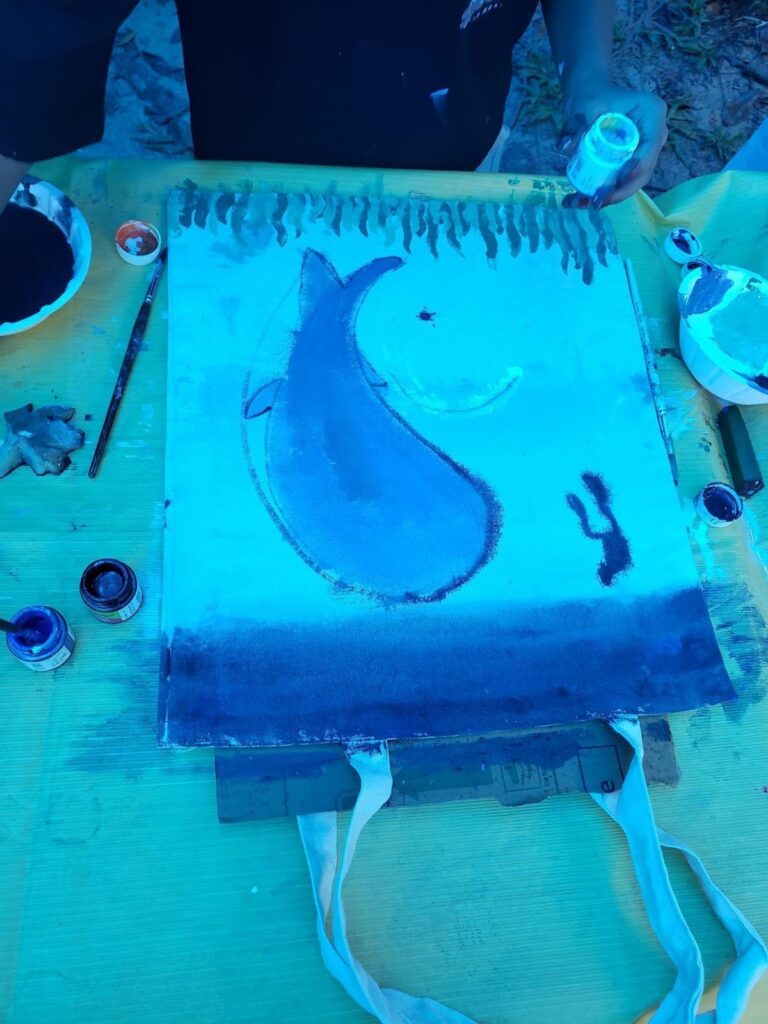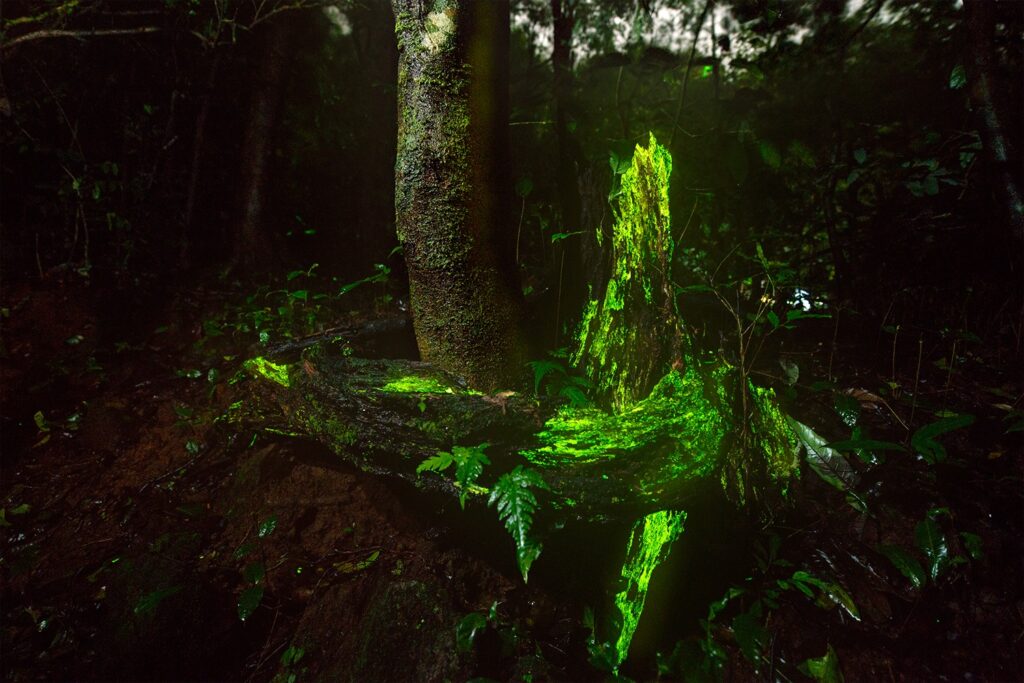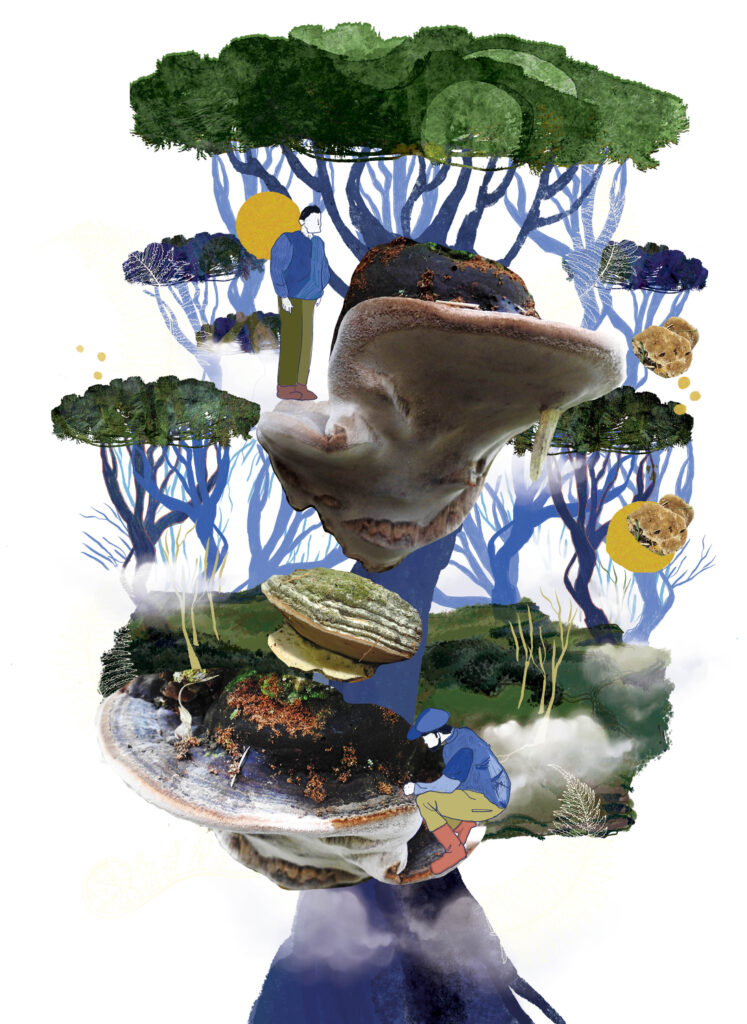Feature image: The bag painting stall at ANET Open Day, 2025.
Located in the Bay of Bengal, India’s Andaman and Nicobar Islands comprise 836 islands, of which 31 are inhabited. The Andaman Nicobar Environment Team (ANET), based in Wandoor, South Andaman, is a research and conservation initiative dedicated to protecting the unique biodiversity of this region and supporting sustainable coastal livelihoods. From coral reefs and mangroves to turtles, dugongs, and Indigenous knowledge systems, its work spans a wide range of ecosystems and disciplines.
Every year, ANET organises an Open Day—a popular event that welcomes students, researchers, families, and curious visitors to explore the campus and engage with the ongoing work. Through immersive exhibits, interactive games, and hands-on activities, guests gain a deeper understanding of the islands’ rich natural heritage and the efforts being made to conserve it. A day before this year’s event, the place was abuzz with anticipation and energy. Many hands and minds worked quietly and tirelessly to put the event together—one small thing at a time. A photo booth, videos, posters, performances, stalls with games, and more. The excitement was palpable.
We were all set to welcome visitors the next morning. This year, I was assigned to be at the bag painting stall. The tables were laid out with crisp, white canvas bags, tiny bottles of paint and brushes, and sea creatures meticulously carved out of potatoes! Then, we had an unexpected visitor: rain. I stood there a little defeated at the sight of such a downpour. But then they trickled in—excited little children with their hands linked, followed by their friends and siblings, and other kids pointing to the stalls, wide grins on their faces. Some had even dragged along their parents and grandparents, all patiently waiting in line for their turn.
The rain had barely dampened their energy. It wasn’t just the turnout that struck me; it was the way everyone approached the bag painting activity I was supervising. They were all childlike. Parents painted alongside their children, helping mix colours, offering suggestions, and sometimes just following the child’s lead. The usual roles of adult and child seemed to blur. They had immersed themselves in the task, and some took it upon themselves to fill every white space with vibrant colours on the bag. They painted unabashedly, unapologetically, sending brushes and paint and water flying from one side of the stall to the other. They painted outside the boundaries. Some were cautious though—they made the turtles look like turtles, trees like actual trees, and painted the water blue and the skies orange.

What was the one thing that tied them together? I wondered as I handed out a paint bottle, a brush, a stamp.
It was the world as they saw it—deeply rooted in observation and endless questioning. Amid the noise and mess, I realised something significant: what I was witnessing wasn’t just art, it was a form of nature journaling, a process of recording, interpreting, and making sense of the world through direct engagement. While the children had no formal tools or journals, they were observing in real time, just like any researcher in the field. They were noting details, feeling textures, and imagining shapes of animals, trees, and ecosystems they had seen or hoped to see.
But what surprised me even more was the way they saw not just the familiar or charismatic species, but the ones that often go unnoticed. I spoke with one child who had painted an odd-looking, elongated blob-shaped creature that he referred to as keeda (meaning ‘bug’ in Hindi). His description matched that of a sea slug, and when I showed him a picture, he immediately identified it, explaining that they were common on the shore and “slimy”. To me, this wasn’t just about the species. It was an observation made in the intertidal zone which becomes exposed at low tide. He was aware of it, he recognised it, and even had a term for it. His recognition of the species wasn’t just linguistic—it was an understanding rooted in his experience of the shore.
As the event progressed, more children gathered at the stall, bringing with them new perspectives and ideas. I observed them closely, noticing the subjects they chose to paint. Some painted schools of fish, clustered together in tight formations. Others painted large, green sea turtles and tiny leatherbacks making their way to the ocean. They painted sea stars with all five limbs stretching out and stamped impressions of sting rays. The diversity of their subjects was striking, not just in the creatures they depicted, but in the relationships they portrayed between the animals and their environments.

Yet another painting seared in my memory was that of a whale beside a scuba diver. The diver was painted minuscule in comparison to the whale, emphasising the enormity of the creature. This was a clear observation of scale and proportion, showing an understanding of the relative size of marine animals.

In anthropology, this is understood as the way people construct meaning from their environment. The act of observation—whether through art, language, or other forms of expression—shapes how individuals and communities relate to the world. Anthropologists such as Tim Ingold have long stressed on the importance of close observation and engagement with the world, arguing that knowledge is formed through this direct interaction.
In the case of children painting at the stall, they were making sense of the natural world through their observations. The whale beside the scuba diver wasn’t just a whimsical image; it was a deliberate interpretation of scale, knowledge, and the relationship between humans and the marine world. Similarly, the schools of fish painted in tightly packed formations weren’t just a random choice; they mirrored the behaviour of fish in nature, where certain species tend to group together for protection or feeding. The turtles and sea stars were painted with remarkable accuracy too, reflecting an understanding of their shapes and behaviours.
The act of observing and documenting, through art or otherwise, is a fundamental part of how we come to understand the natural world. In that moment, the stall became more than just a space for painting; it became a space for knowledge-making, where individuals of all ages could connect with and express their understanding of the environment around them. As Ingold writes, we are all “making” in our own ways, crafting meaning through direct engagement and personal observation.
As the day wore on, the stall was still surrounded by eager faces. Kids huddled around, adding final touches to their paintings, unwilling to let go of the activity. As exhausted as I was by the end of it, I was still excited to see the last of the paintings. The rain may have delayed the start, but once the children and their families arrived, the stall came alive. It became a space for observing and reflecting on the world, where age and role dissolved into the simple act of looking and learning. And in that shared space, in that collective act of seeing and creating, something meaningful happened: an overwhelming display of the world through many eyes. So, listen—listen quietly, look, and let the world unfold.






